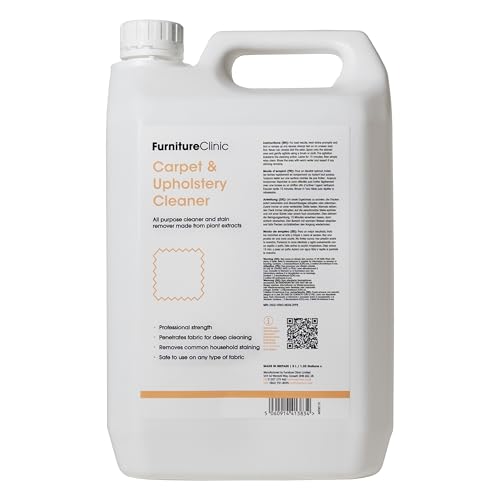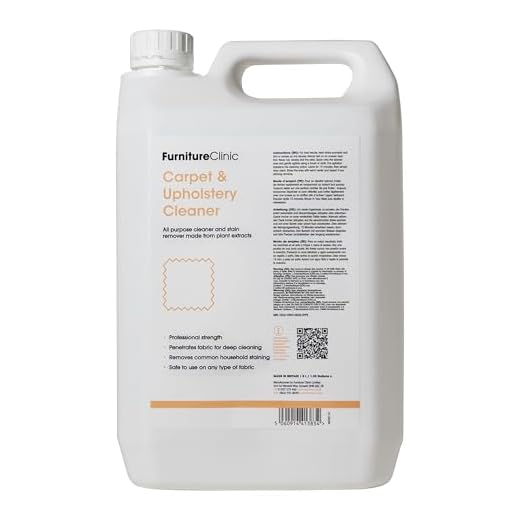








Using certain cleaning agents around your home can pose risks to your furry friend. Many of these products contain chemicals that could lead to adverse reactions, especially for sensitive animals. If you’re contemplating the use of a cleaning substance, it’s crucial to check the ingredient list and ensure it’s free from harmful components.
When I first adopted my pup, I was eager to maintain a fresh and clean home. I quickly discovered that not all cleaning solutions were suitable. After a couple of unfortunate incidents, including a bout of gastrointestinal distress after using a popular deodorising agent, I realised the importance of scrutinising what I brought into my space. Switching to pet-friendly alternatives made a significant difference in my dog’s health and comfort.
Always prioritise non-toxic, natural options that are specifically marked as suitable for households with animals. Look for products that are biodegradable and free from synthetic fragrances, as these can be particularly irritating. It may take a bit of research, but the peace of mind knowing your home is safe for your four-legged friend is well worth the effort.
Is Carpet Powder Safe for Dogs?
Choose products that are specifically labelled as pet-friendly. Always check the ingredient list carefully. Many formulations contain chemicals that can be harmful if ingested or inhaled.
Here are some guidelines to consider:
- Look for natural alternatives. Baking soda or cornstarch can be effective without the risk of toxic substances.
- Avoid fragrances that can irritate your pet’s sensitive nose. Unscented options are often better.
- Before using any product, conduct a patch test on a small area to observe if your pet exhibits any unusual behaviour.
- After applying any cleaning product, ensure the area is well-ventilated and dry before allowing your furry friend back in.
In my experience, I once used a scented cleaner that I thought was harmless. My dog started sneezing and acted anxious for hours. Since then, I’ve switched to safer, unscented choices and my pet’s comfort improved significantly.
Consult your vet if you’re unsure about a specific product. They can provide tailored advice based on your pet’s health and any sensitivities they might have.
Understanding Carpet Powder Ingredients
To ensure the well-being of your furry friend, it’s crucial to examine the components of the cleaning agents used in your home. Many commercial products contain a variety of substances that can pose risks to pets. Always read labels meticulously and opt for formulas with natural or non-toxic ingredients.
Common Ingredients to Avoid
Certain chemicals can be harmful to pets. Here are some components you might encounter:
| Ingredient | Potential Risks |
|---|---|
| Fragrance | Can cause respiratory issues and skin irritation. |
| Phosphates | May lead to gastrointestinal distress if ingested. |
| Chlorine | Toxic fumes can affect breathing and cause irritation. |
| Enzymes | Some can be harmful if ingested, causing digestive problems. |
Safer Alternatives
Consider using natural solutions like baking soda or cornstarch. These options can effectively manage odours and absorb moisture without posing a risk to your pet’s health. Additionally, products labelled as pet-friendly or eco-conscious are generally safer choices. Always verify certifications or endorsements from reputable organisations dedicated to animal welfare.
Potential Risks of Carpet Powder for Pets
Using a cleaning agent on your flooring might seem harmless, but there are several risks that pet owners should consider. Many of these products contain chemicals that can cause gastrointestinal upset if ingested. If your furry friend ingests even a small amount, they may experience symptoms like vomiting or diarrhoea. Always ensure that your companion cannot access treated areas until they are fully dry and free from any residue.
Allergic Reactions
Another concern is allergic reactions. Ingredients in these products can trigger sensitivities in some animals. Signs of an allergic response may include excessive itching, sneezing, or skin irritations. Monitor your pet closely after treatment. If you notice anything unusual, consult your veterinarian promptly.
Respiratory Issues
Inhalation of fine particles can lead to respiratory problems. Pets with pre-existing conditions, such as asthma, may be particularly vulnerable. Ensure proper ventilation during and after application to minimise exposure. Consider switching to pet-friendly alternatives that use natural ingredients to reduce these risks.
Always prioritise your pet’s health by researching any cleaning products you plan to use. Opt for options that are specifically designed to be pet-friendly, and when in doubt, consult with your veterinarian for personalised advice.
Signs of Carpet Powder Toxicity in Dogs
If you suspect that your furry friend has ingested or come into contact with harmful substances, look for these signs of toxicity. Symptoms may vary based on the ingredients involved, but some common indicators include:
Vomiting: This is often the first sign that something isn’t right. If your pet starts to retch or brings up food or foam, it could indicate irritation or ingestion of a toxic agent.
Diarrhoea: Unexplained loose stools or frequent trips outside can signal gastrointestinal distress. Keep an eye on your companion’s bathroom habits following exposure.
Lethargy: If your canine seems unusually tired, sluggish, or less responsive than normal, it may be a reaction to toxic exposure. Monitor their energy levels closely.
Excessive drooling: An increase in salivation can indicate nausea or discomfort. If you notice your pet drooling more than usual, it could be a warning sign.
Loss of appetite: A sudden disinterest in food can indicate that your dog is feeling unwell. If mealtime becomes a struggle, take note.
Difficulty breathing: Any signs of respiratory distress, such as wheezing or rapid breathing, should prompt an immediate veterinary consultation. This could indicate a severe reaction.
Seizures: In rare cases, ingestion of particularly harmful substances can lead to neurological symptoms, including seizures. This is a medical emergency and requires immediate attention.
Always err on the side of caution. If you observe any of these symptoms, consult a veterinarian promptly to ensure your pet receives the care they need.
Choosing Pet-Friendly Carpet Cleaning Products
Opt for cleaning solutions that are labelled as non-toxic and eco-friendly. I learned the hard way that some products can trigger allergies or stomach issues in my furry friend. Always check for certifications or seals from reputable organisations that indicate safety for animals.
Natural Ingredients are Key
Focus on formulations that utilise natural ingredients such as baking soda, vinegar, or citrus extracts. These options are less likely to irritate sensitive noses or paws. I’ve found that mixtures with essential oils like lavender or chamomile can effectively eliminate odours without posing a risk to my pet’s health.
Avoid Harsh Chemicals
Stay away from products containing bleach, ammonia, or synthetic fragrances. These substances can cause respiratory distress or skin irritation. After a few unfortunate incidents, I now prioritise brands that are transparent about their ingredient lists. Always read labels carefully and do a quick search on any unfamiliar components.
Safe Application Techniques for Carpet Powder
To minimise risks when using any cleaning agent, ensure your furry friend is not in the vicinity. Before application, take them for a walk or keep them in a separate room. This helps avoid accidental exposure during the process.
Preparation and Application
Before sprinkling the product, vacuum the area thoroughly. This not only removes loose dirt but also ensures the active ingredients can work more effectively. Follow the manufacturer’s instructions for the correct amount; using too much can increase the risk of residue. After applying, leave the area undisturbed for the recommended time period to allow the treatment to settle.
Post-Application Care
Once the treatment period is over, vacuum the area again to remove any excess material. This step is crucial to prevent your pet from ingesting any residues left on the floor. It’s wise to wait at least 24 hours before letting your companion back into the treated space, ensuring all particles have settled and the air has cleared. Regularly checking the area for any signs of irritation in your pet is advisable, especially in the days following treatment.
Alternatives to Carpet Powder for Pet Owners
Opt for natural and non-toxic solutions that keep your living space fresh without posing risks to your furry friends. Here are some alternatives to consider:
- Baking Soda: Sprinkle it on the floor and let it sit for a few hours before vacuuming. This absorbs odours effectively and is safe for your pets.
- Vinegar Solution: Mix equal parts of water and white vinegar in a spray bottle. This can be used to clean stains and neutralise smells, and it dries without harmful residues.
- Essential Oils: Use pet-safe essential oils like lavender or chamomile for a pleasant scent. Just ensure they are diluted properly and used sparingly, as some oils can be irritating.
- Commercial Pet-Safe Cleaners: Look for products specifically labelled as non-toxic for animals. Brands that focus on eco-friendly ingredients are often a good choice.
- Regular Vacuuming: Keeping surfaces clean through frequent vacuuming helps reduce odours and allergens that can affect your pet’s health.
When considering your pet’s diet, remember that their overall health is connected to their environment. You might want to explore options like best dry food for dogs with yeast problems uk to support their well-being further.
By opting for these alternatives, you can maintain a clean and fresh home while ensuring your pets stay healthy and happy.









